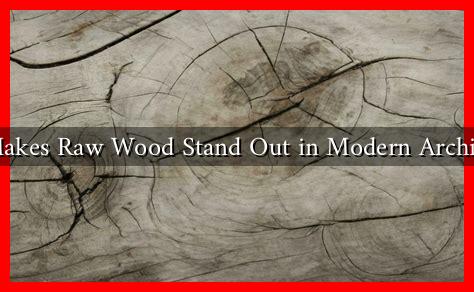-
Table of Contents
What Makes Raw Wood Stand Out in Modern Architecture?
In recent years, raw wood has emerged as a prominent material in modern architecture, captivating architects, designers, and homeowners alike. Its unique aesthetic, sustainability, and versatility make it a standout choice in a world increasingly focused on eco-friendly building practices. This article explores the reasons behind the growing popularity of raw wood in contemporary architecture, highlighting its benefits, applications, and notable examples.
The Aesthetic Appeal of Raw Wood
One of the most compelling reasons for the rise of raw wood in architecture is its natural beauty. The organic textures, colors, and patterns found in wood create a warm and inviting atmosphere that is often missing in more industrial materials. Here are some aesthetic advantages of using raw wood:
- Unique Character: Each piece of wood has its own distinct grain and color, ensuring that no two structures are exactly alike.
- Warmth and Comfort: Wood adds a sense of warmth to spaces, making them feel more welcoming and comfortable.
- Versatility: Raw wood can be used in various forms, from structural beams to decorative elements, allowing for creative expression.
Sustainability and Environmental Impact
As the world grapples with climate change and environmental degradation, the demand for sustainable building materials has surged. Raw wood is often considered a more eco-friendly option compared to concrete and steel, which have high carbon footprints. Here are some sustainability benefits of raw wood:
- Carbon Sequestration: Trees absorb carbon dioxide as they grow, making wood a carbon-neutral material when sourced responsibly.
- Renewable Resource: Wood is a renewable resource, especially when sourced from sustainably managed forests.
- Energy Efficiency: Wood has natural insulating properties, which can lead to reduced energy consumption in buildings.
According to the Forest Stewardship Council (FSC), sustainably sourced wood can significantly reduce the environmental impact of construction projects. For more information on sustainable forestry practices, visit the FSC website.
Versatility in Design and Construction
Raw wood’s versatility extends beyond aesthetics and sustainability; it also plays a crucial role in modern architectural design and construction techniques. Architects are increasingly finding innovative ways to incorporate wood into their projects:
- Structural Elements: Wood can be used for beams, columns, and trusses, providing strength and stability while maintaining a lightweight profile.
- Interior Finishes: Raw wood can be used for flooring, wall paneling, and cabinetry, adding texture and warmth to interiors.
- Exterior Facades: Wood cladding can create striking exteriors that blend harmoniously with natural surroundings.
Notable Examples of Raw Wood in Modern Architecture
Several architectural projects around the world showcase the beauty and functionality of raw wood. Here are a few notable examples:
- The Treetop Walkway in Germany: This elevated walkway is constructed from raw wood, allowing visitors to experience the forest canopy while minimizing environmental impact.
- The Sawmill House in Australia: Designed by architect John Wardle, this residence features raw timber throughout, creating a seamless connection between the interior and exterior.
- The Vitra Fire Station in Switzerland: Designed by Zaha Hadid, this building incorporates raw wood elements that contrast with its modern, angular forms.
Conclusion
Raw wood stands out in modern architecture for its aesthetic appeal, sustainability, and versatility. As architects and designers continue to explore innovative ways to incorporate this natural material into their projects, the trend is likely to grow. The unique character of wood, combined with its environmental benefits, makes it an ideal choice for those looking to create beautiful, functional, and sustainable spaces. As we move forward, embracing raw wood in architecture not only enhances our built environment but also fosters a deeper connection to nature.

